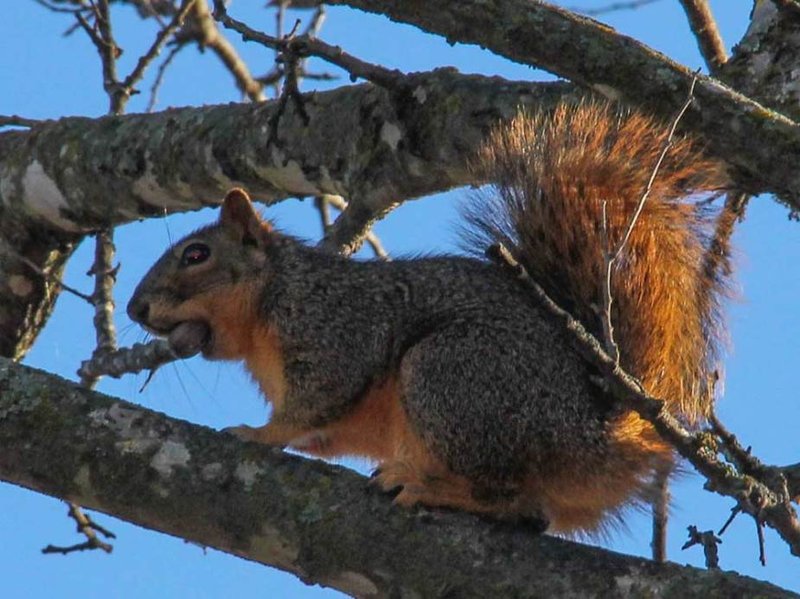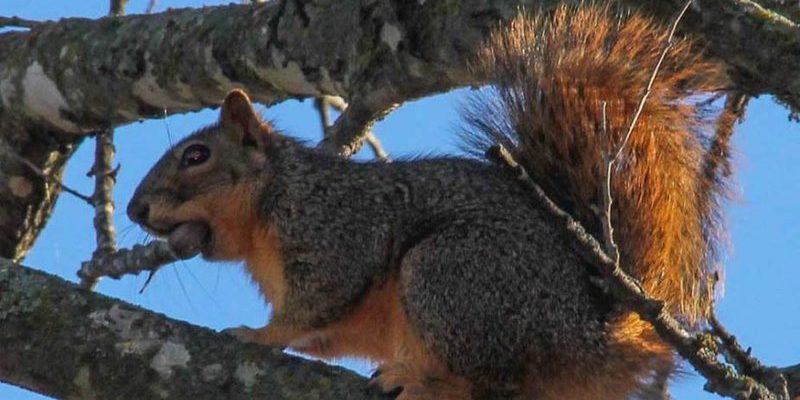
Imagine a squirrel as a tiny chef in a bustling kitchen, always on the lookout for ingredients. Their diets can vary widely depending on the season and location, making them resourceful foragers. Whether it’s the sweet taste of acorns in fall or the buds from trees in spring, these little guys have a diverse menu. So, let’s dive into the world of squirrels and explore what they eat and how they hunt.
Understanding Squirrel Diets
Squirrels are omnivores, meaning they don’t just stick to one food group. They enjoy a balanced diet that includes both plants and the occasional insect. You might be wondering, what exactly do they eat? Here’s a breakdown:
- Nuts and seeds: Acorns, walnuts, and sunflower seeds are like candy to squirrels. They stash these treats away for winter, showing off their incredible memory and planning skills.
- Fruits: Apples, berries, and even mushrooms can make their way into a squirrel’s diet. These fruits provide a burst of energy, especially during the warmer months.
- Bark and buds: In tougher times, squirrels might nibble on tree bark or tender buds. This adaptability helps them survive when other food sources are scarce.
The type of food a squirrel eats often depends on its habitat. For instance, tree squirrels in urban areas might have easier access to gardens and bird feeders, while those in forests rely more on what the trees provide.
How Squirrels Find Their Food
Squirrels use several clever methods to locate food. It’s not just about stumbling upon a tasty treat; they have strategies that would make even the best treasure hunters jealous. Here’s how they do it:
1. Acute Sensory Skills
Squirrels have excellent vision and a keen sense of smell. They can spot a nut from afar, and once they catch a whiff of their favorite food, they won’t stop until they find it. Think of them as tiny detectives—always on the case, sniffing out the next snack.
2. Memory and Caching
Have you ever hidden snacks for later? Squirrels take this to another level. They bury nuts in various locations—a process known as caching. Surprisingly, they remember where many of their stashes are, which helps them access food in the winter months when it’s scarce. Without this ability, squirrels would struggle to survive during harder seasons.
3. Observational Learning
Squirrels are not only smart; they’re social learners too. If one squirrel discovers a tasty food source, other squirrels often watch and learn from it. This is like passing along a secret recipe in the animal kingdom.
The Hunting Strategies of Tree Squirrels
When it comes to hunting, or more accurately, foraging, squirrels employ a combination of stealth and speed. They may not be hunters in the traditional sense, but they know how to outsmart other creatures looking to eat their food.
1. Agile Movements
Squirrels are incredibly agile. They can leap from one branch to another with impressive distance, allowing them to access hard-to-reach food sources. Their strong hind legs help them make these incredible jumps, making it seem effortless.
2. Camouflage and Stealth
While foraging, squirrels often use their fur for camouflage. They blend into their surroundings, making it harder for predators to spot them. This stealth mode allows them to sneak up on food and avoid becoming someone else’s meal.
3. Teamwork
Squirrels sometimes forage in groups, which can be a great strategy. This way, they can keep an eye out for predators while searching for food. Teamwork makes them safer and more effective at finding dinner.
Seasonal Changes in Diet
As seasons change, so do squirrels’ dining habits. Here’s how they adapt:
Fall and Winter
During fall, squirrels engage in a behavior known as “hyperphagia,” where they eat excessively to build up body fat. This is especially important for winter, when food sources become scarce. They rely on the nuts they’ve stored and must remember their hiding spots to survive.
Spring and Summer
In spring and summer, the menu shifts to the bounty of berries, flowers, and fresh shoots. It’s like a buffet for them. This seasonal shift provides them with plenty of nutrients to get through the warmer months and prepares them for the fall hoarding.
Challenges in a Squirrel’s Diet
While squirrels are resourceful, they face challenges in finding food. Climate change, urbanization, and habitat loss can disrupt their access to food sources.
1. Habitat Loss
As cities expand, natural habitats shrink. This can make it harder for squirrels to find their favorite foods, leading to competition with other wildlife.
2. Competition
Squirrels aren’t the only ones after those tasty treats. Birds, chipmunks, and other animals often compete for the same food sources. Squirrels must be quick and strategic to ensure they get their fill.
3. Human Interference
Squirrels often find themselves in conflict with humans. They raid gardens and bird feeders, leading to tensions. This can lead to squirrels being viewed as pests, which can impact their populations.
The Impact of Squirrels on Ecosystems
You might not think about it, but squirrels play a vital role in their ecosystems. Their foraging habits help seed dispersal, promoting the growth of new plants. When they bury nuts and forget about them, those nuts can sprout into new trees, creating new habitats for other wildlife.
1. Seed Dispersal
Through their foraging and caching habits, squirrels help in spreading various tree and plant species. This contributes to forest regeneration, maintaining biodiversity.
2. Food Chain Dynamics
Squirrels are a key food source for a variety of predators, including hawks, foxes, and snakes. By serving as prey, they support a balanced ecosystem, ensuring that predators have food too.
3. Soil Health
Their digging habits can also aerate the soil, promoting healthier plant growth. This means that the humble squirrel is not just an acrobat but also an essential player in the local environment.
As we wrap up our exploration of the diet and hunting strategies of squirrels, it becomes clear that these little creatures are more than just cute; they’re essential to our environment. From their impressive gathering skills to their role in spreading seeds, squirrels showcase nature’s ingenuity in a small package. Next time you see a squirrel zip across your yard, remember that there’s a lot more going on than meets the eye. They’re out there, foraging and hunting, ensuring the delicate balance of their ecosystem remains intact.

